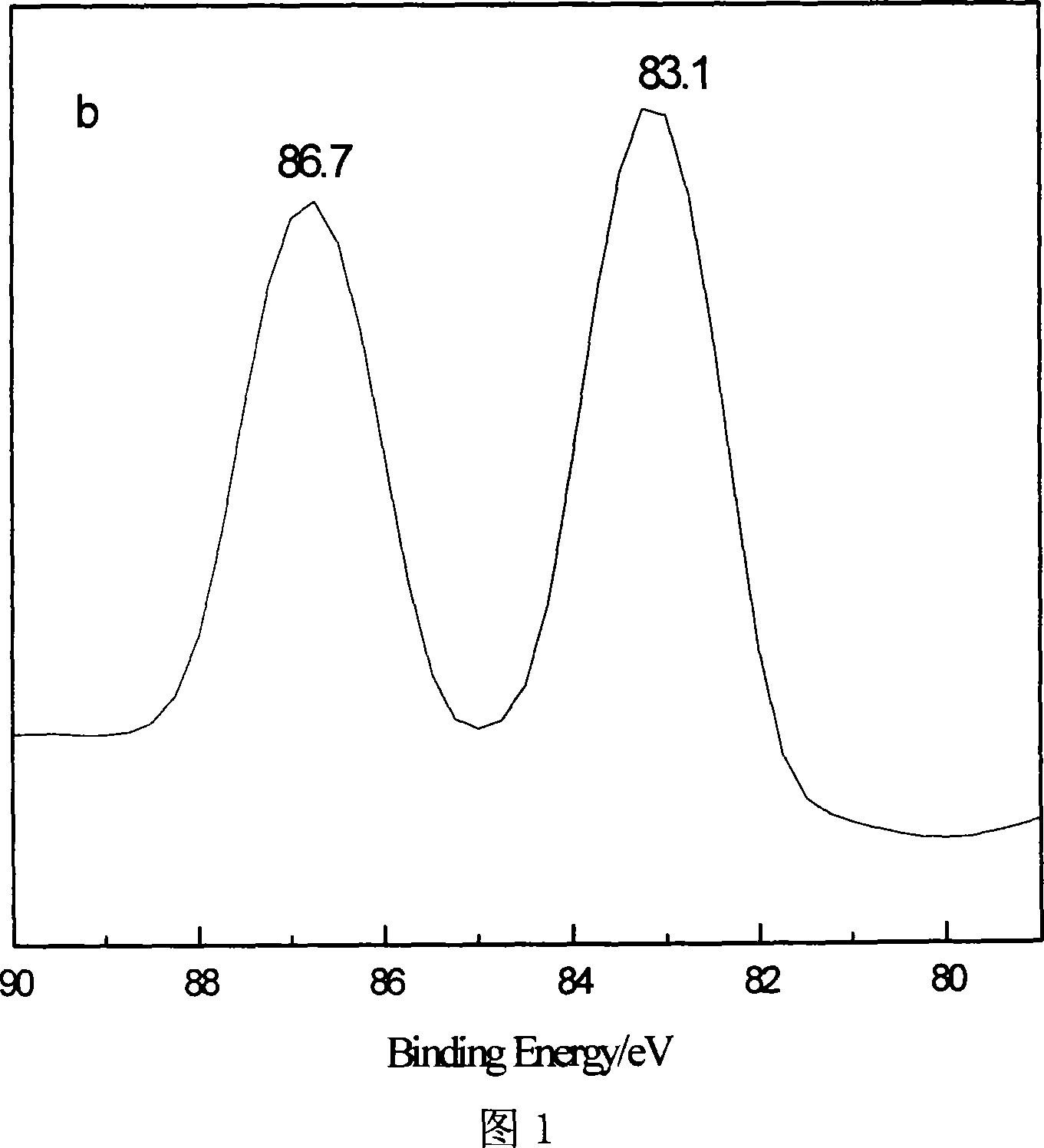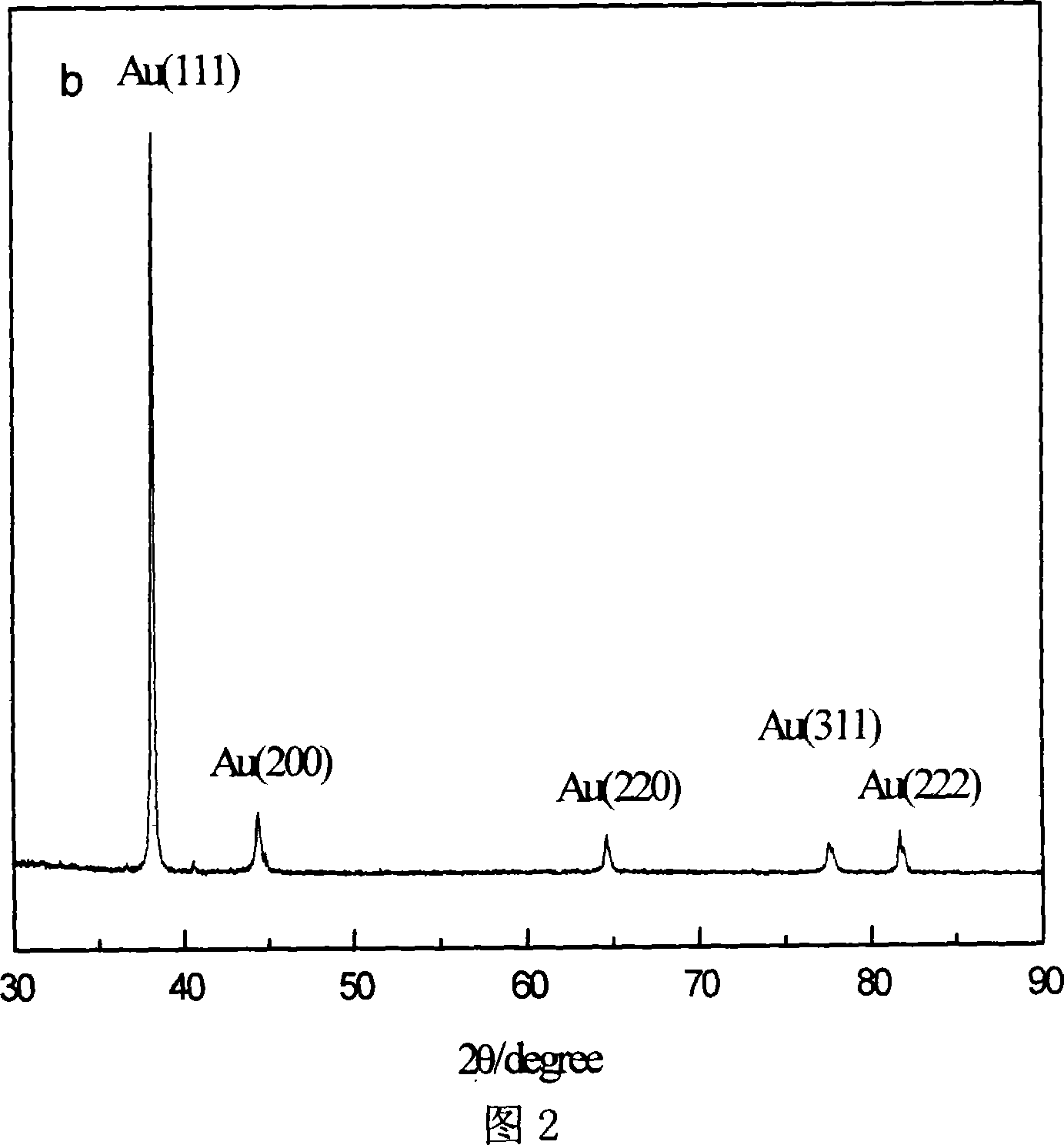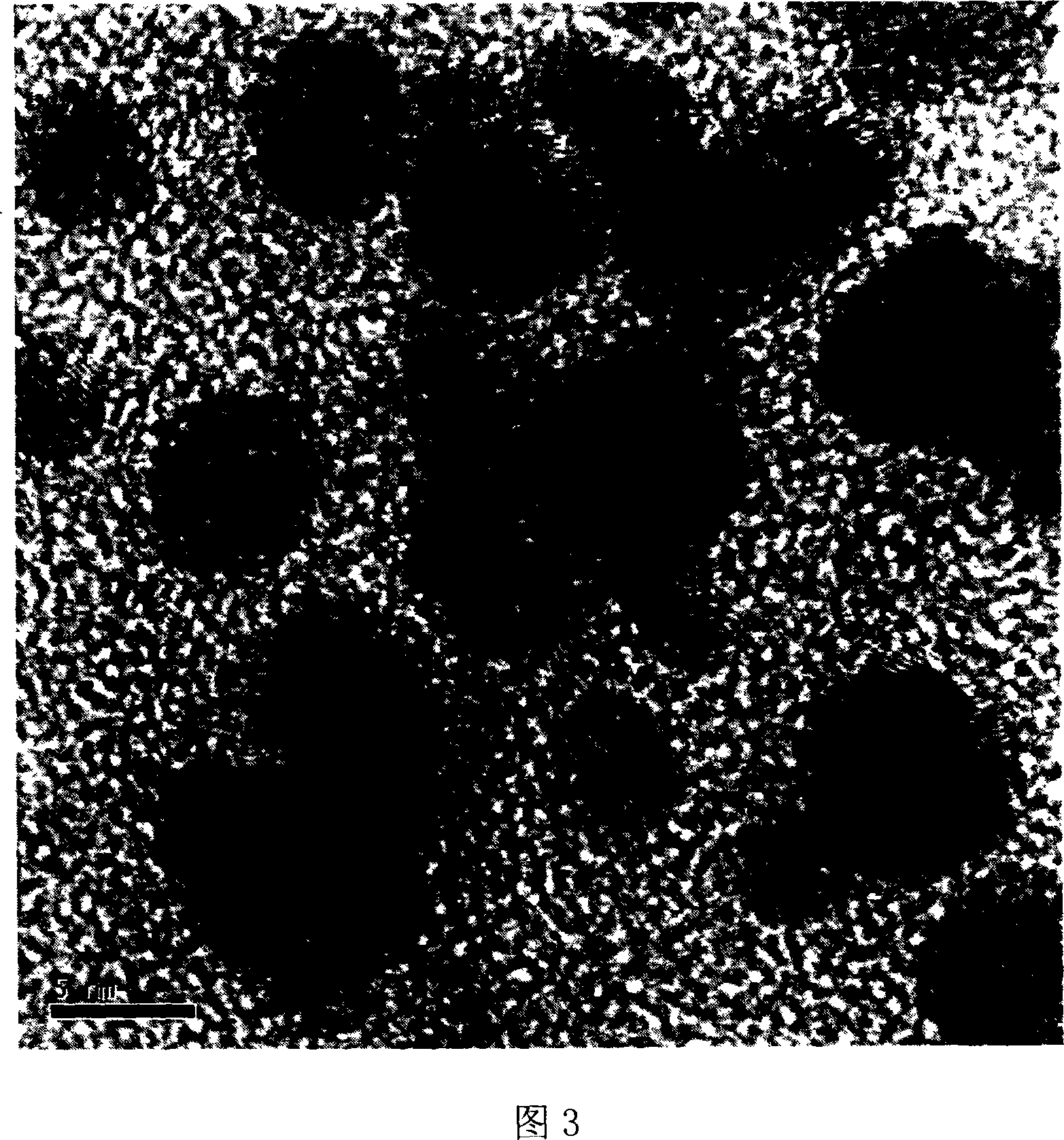Method for producing nanometer metal by plasma deoxidization in low termprature
A low-temperature plasma and nano-metal technology, applied in the field of material science, can solve problems such as uneven distribution of nano-metal particles, easy aggregation of nanoparticles, cumbersome preparation process, etc., and achieve the effects of avoiding adverse thermal effects, good dispersion, and simple operation
- Summary
- Abstract
- Description
- Claims
- Application Information
AI Technical Summary
Problems solved by technology
Method used
Image
Examples
Embodiment 1
[0026] Chlorauric acid (HAuCl 4 ) between the two electrode plates of the discharge tube in the vacuum chamber, airtight, evacuate the vacuum chamber, and then fill it with argon as the discharge gas to maintain a pressure of 30Pa, apply a DC voltage of 800V to the electrodes, and use glow discharge Plasma reduction of chloroauric acid (HAuCl 4 ), the reduction time is 100min, and the nano-gold particles are prepared, and the particle diameter is 2.5-7nm.
[0027] The prepared nano-gold particles are analyzed by photoelectron energy spectrum, electron diffraction and transmission electron microscope, and the following analysis results can be obtained:
[0028] As shown in Figure 1, the photoelectron energy spectrogram shows that only the characteristic peaks of gold elements appear in the spectrum, showing that chloroauric acid is reduced to zero-valent gold by the low-temperature plasma method;
[0029] Electron diffraction figure as shown in Figure 2, only has the diffract...
Embodiment 2
[0032] H 2 PtCl 6 Put it between the two electrode plates of the discharge tube in the vacuum chamber, seal it, evacuate the vacuum chamber, then fill it with helium as the discharge gas, maintain the pressure of 50Pa, apply a DC voltage of 200V on the electrode, and use corona discharge plasma reduced H 2 PtCl 6 , the reduction time is 120min, and nano-platinum particles are prepared. It was confirmed by photoelectron spectroscopy, electron diffraction and transmission electron microscopy that H 2 PtCl 6 It is completely reduced to elemental platinum with a particle size of 2.5-10nm.
Embodiment 3
[0034] PdCl 2 Put it between the two electrode plates of the discharge tube in the vacuum chamber, seal it tightly, evacuate the vacuum chamber, then fill it with oxygen as the discharge gas, maintain the pressure of 90Pa, apply an AC voltage of 1000V on the electrodes, and use dielectric barrier discharge plasma Reduced PdCl 2 , the reduction time is 40min, and the nano-lead particles are prepared. PdCl was confirmed by photoelectron spectroscopy, electron diffraction and transmission electron microscopy 2 Completely reduced to elemental lead with a particle size of 3.0-15nm.
PUM
| Property | Measurement | Unit |
|---|---|---|
| Particle size | aaaaa | aaaaa |
| Particle size | aaaaa | aaaaa |
| Particle size | aaaaa | aaaaa |
Abstract
Description
Claims
Application Information
 Login to View More
Login to View More - R&D
- Intellectual Property
- Life Sciences
- Materials
- Tech Scout
- Unparalleled Data Quality
- Higher Quality Content
- 60% Fewer Hallucinations
Browse by: Latest US Patents, China's latest patents, Technical Efficacy Thesaurus, Application Domain, Technology Topic, Popular Technical Reports.
© 2025 PatSnap. All rights reserved.Legal|Privacy policy|Modern Slavery Act Transparency Statement|Sitemap|About US| Contact US: help@patsnap.com



